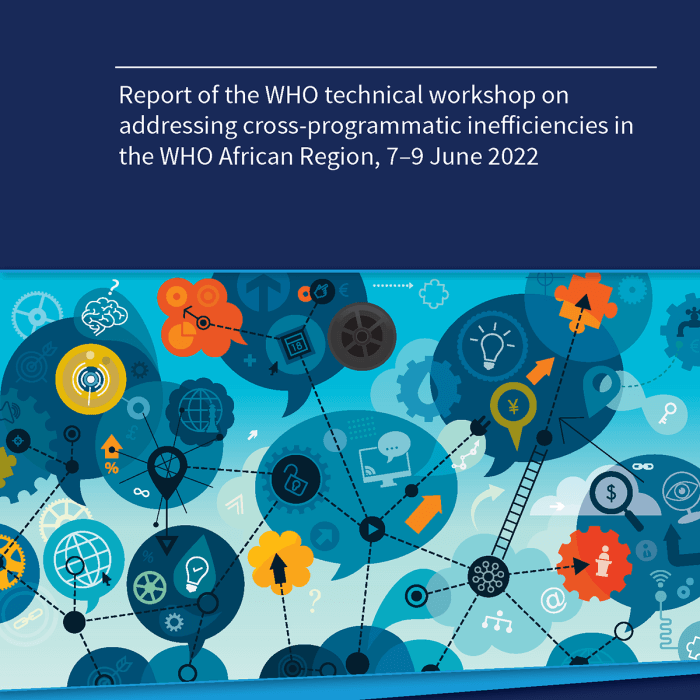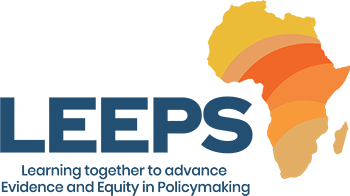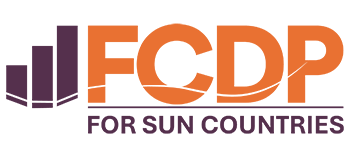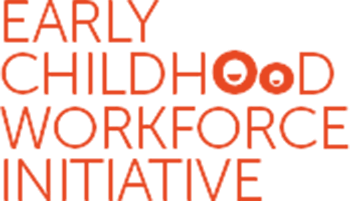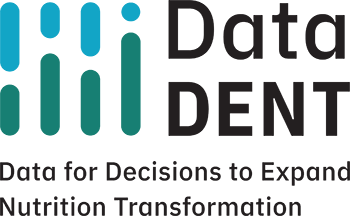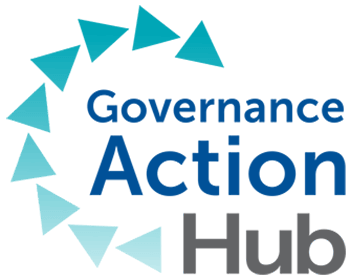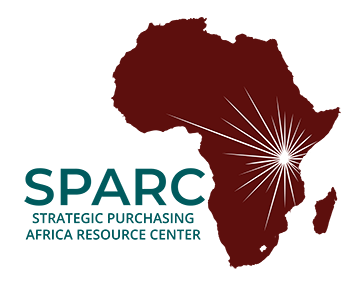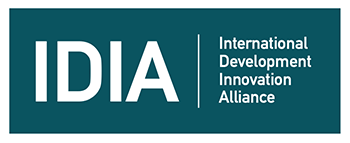Expanding health coverage and services by reducing health system inefficiencies
Health programs in low- and low-middle income countries have been critical channels to increase access to priority health interventions for the prevention and treatment of HIV and AIDS, tuberculosis, malaria, childhood illnesses, family planning, malnutrition, among many other conditions. The success of these programs has resulted in improvements in life expectancy, maternal and child mortality and improved health outcomes.
However, there have been unintended consequences — creating parallel service delivery, medicine procurement, information systems, planning and financing systems outside the control of the Ministry of Health. These parallel functions have resulted in fragmentation, duplications, misalignments and overlaps in the health system that constrain the ability to improve or at the very least sustain coverage of priority health services.
Why cross-programmatic efficiency analysis?
This undue fragmentation across health programs and the overall health system — heavily influenced by the predominance of donor funding — constrains efficiency and impacts country progress toward universal health coverage (UHC). While well-intentioned, fragmentation across health programs can undermine overall progress toward UHC by inefficiently utilizing resources and undermining overall service and population coverage. This can weaken health systems through the creation of parallel structures, competing incentives, duplication of activities and efficiency losses.
Meanwhile, the financing landscape for health is changing rapidly, requiring countries to seek greater value for money in their health care investments. Over time, as countries transition to lower-middle income status, the responsibility for funding many health programs, and the services they support, will increasingly shift toward domestic, public sources in an already constrained fiscal environment for health. Maintaining discrete health programs all with distinctive organizational arrangements and supportive functions is neither sustainable nor aligned with countries’ strategic objectives toward greater health system equity, quality and efficiency.
The Cross-Programmatic Efficiency Analysis (CPEA) diagnostic approach, developed by WHO, detects inefficiencies resulting from the ways in which health programs and related services are implemented within the context of the overall health system. The intention of the CPEA system-wide approach is to identify and address duplications, misalignments and overlaps between shared functions that are common across specific health programs using a functional approach to health systems — service delivery, financing, input generation and stewardship/governance.
Through its application in more than 13 countries in Africa and Asia, the CPEA approach has been used to generate evidence-based dialogue on functional areas for improved alignment, integration and coordination to improve efficiency and overall coverage. Building on the need for cross-country learning and dialogue, a technical workshop was held between June 7–9, 2022 on addressing cross-programmatic inefficiencies, convening seven countries in the WHO African Region (AFRO) — Côte d’Ivoire, Comoros, Ghana, Kenya, Nigeria, Tanzania and Uganda. The virtual workshop was jointly facilitated by WHO Headquarters (HQ), WHO AFRO, WHO Country Offices, Results for Development (R4D) and the Strategic Purchasing Africa Resource Centre (SPARC). Click here to access the technical workshop report.
In this blog, we summarize the key lessons from the workshop and the opportunities to use the CPEA diagnostic approach to support better alignment within countries to use limited resources more effectively.
While specifics vary, countries share common inefficiencies in the fragmentation and duplication of health resources, and weak coordination across the health system and health programs. These shared challenges hold significant implications for countries’ abilities to effectively prioritize and leverage available resources to achieve strategic objectives for health. At the virtual workshop, countries shared some of the mechanisms they are implementing to address these cross-programmatic inefficiencies.
How are countries addressing common cross-programmatic inefficiencies?
Political economy analysis is an important tool to understand the root causes of inefficiencies, as well as dynamics involved in addressing identified inefficiencies, as this agenda to harmonize resources and governance arrangements is inherently both a technical and political process. Political economy analysis tools that consider political dynamics of stakeholders, as well as structural legacies and issues (among other considerations) can deepen understanding of why inefficiencies persist despite the existence of opportunities to address them. Further, reforms to address cross-programmatic inefficiencies can be important levers to strengthen the underlying health system but cannot be addressed within health programs alone. Political momentum and buy-in to address cross-programmatic inefficiencies can be built in countries by convening policy dialogues across stakeholders.
Côte d’Ivoire convened a National Coordination Platform for the Financing of Health (PNCFS) to build consensus on health spending targets, ensure harmonization, alignment and monitoring of both internal and external funding as aligned to the National Health Development Plan and strengthen the governance role of the Ministry of Health to coordinate the health sector. The platform convenes key health financing stakeholders across government programs and ministries, technical and financial partners, private sector and civil society. This has helped to improve stakeholder alignment around the health financing strategy and to hold partners accountable to supporting the achievement of the strategy.
Addressing cross-programmatic inefficiencies requires strong commitment from program- and system-level leaders.
Strong leadership can create alignment and accountability for external resources that are embedded and coordinated within health system plans. Furthermore, generating awareness and demand for such planning is critical, without which there is no momentum to progress. This process should involve not only national level stakeholders but also the inputs and collaboration from service delivery upwards.
Ethiopia’s Millennium Development Goals (MDG)/Sustainable Development Goals (SDG) Pooled Fund is a coordination mechanism for pooled funding managed by the Federal Ministry of Health and is one of the government’s preferred modalities for scaling up development partners’ assistance towards the Health Sector Development Plan. The MDG/SDG pooled fund leverages existing government systems for financial management and procurement as well as external and internal audit, and includes a common planning, reporting and monitoring framework referred to as the “Three ones,” that is implemented from the lowest level — woreda (or district) — to the federal level of government.
Coordination and targeted action is critical both vertically (across levels of the health system) and horizontally (across programs and sectors).
This is needed even in devolved contexts where many health programs (often donor funded) remain highly centralized and separate. This leads to programmatic resources that do not reach lower levels of the system, or if they do, they arrive heavily earmarked and in-kind, which constrains their flexible use. Fully realized and functional coordination mechanisms – particularly at the subnational level – therefore can have multiplier effects throughout the system. Such processes are inherently long-term endeavors, requiring enduring commitment and investment as well as robust, data-driven mechanisms to ensure accountability to progress.
In Kenya, Tanzania and Uganda, decentralized levels of governments are playing increasing roles in health system planning and delivery. Ensuring clear structures for coordination across governments is achieved through inter-governmental agreements in Kenya, where the roles and obligations of national and county governments are stipulated to create clear coherence in delivery of functions at national and county level. In Uganda, guidance is provided for the planning and budgeting process to districts levels which is aligned to the National Development Plan, and an audit process is used to confirm alignment to ensure resources are channeled to identified priorities. In Tanzania, the Direct Facility Financing mechanism is used to support the flow of resources to primary healthcare providers and focuses on building financial management capacities and accountabilities. This vehicle could be used to pool resources for currently fragmented health program funding as a channel to service delivery points.
Ghana has leveraged partner support to improve last-mile supply chain distribution to address commodity stock-outs, reduce transport costs and maintain regular supply of essential products across system levels. The Procurement Act 663 and Amendment 914 ensures fair procurement processes and supports the pooled procurement system with a framework for contracting using a fixed pricing strategy, for over 60 products to promote value for money. The Ghana Integrated Logistics Management Information System has facilitated improvements in data infrastructure across health system levels.
A single, unified, and well-connected national plan is one clear mechanism to bring coherence and accountability across the system and provide a platform to address cross-programmatic inefficiencies. Importantly, this plan should be data-driven and incorporate donor and other external resources for coherence and coordination across the sector. Planning should respond to a people-centered vision to address individuals’ cross-cutting health needs with supportive functions such as financing and accountability mechanisms that are designed and established to support these efforts. Focusing services on user needs over specific disease areas can help de-fragment silos and encourage a more holistic provision of health services. Furthermore, generating awareness and demand for such planning is critical, without which there is no momentum to progress.
There is shared responsibility of both countries and donors to achieve UHC through efficient and effective use of existing resources as aligned to country priorities. Rwanda’s MOH has used its stewardship role to coordinate with donors and strengthen partner coordination towards UHC. Rwanda has succeeded in doing so by setting clear objectives with well-articulated strategies and joint planning and budgeting processes; well-defined and comprehensive governance structures at all levels of the health system to ensure donors are aware of, and aligned to these strategies and objectives; and robust, data-driven accountability mechanisms through joint-monitoring. Government and development partner coordination is a long-term process of engagement around shared objectives and can neither be achieved overnight nor through one-off interventions. It can be achieved through sustained systematic efforts guided by a clear, country-led strategy, as in the case of Rwanda.
Donor agencies also have a key role to play in supporting countries efforts to improve coordination through a single national plan, and budget process and avoiding further fragmentation, in line with the Paris Declaration on Aid Effectiveness and other multi-lateral agreements. The partnership approach taken to this workshop, as well as the program of work on CPEA, demonstrates the potential for coordinated approaches that enable cross-programmatic efficiency.
Addressing cross-programmatic inefficiencies across the health system is possible, by taking incremental steps that consider broader financing realignment and governance reform. CPEA can be institutionalized as a lever to improve efficiency across health programs and integrate health system reforms to bring coherence across the health system towards consistent objectives. As more countries seek to implement CPEA, we look forward to cataloguing country innovations and solutions to common challenges and supporting a learning agenda to benefit others.
Next Steps for CPEA Countries in the WHO African Region
A key output of this workshop was country-specific action briefs that summarize the key cross-programmatic inefficiencies, but more importantly lay out prioritized actions to address these inefficiencies. For some countries this meant a targeted approach to addressing one prioritized inefficiency (such as strengthening pooled funding mechanisms at sub-national levels), while for other countries, this meant actions focused on dissemination and communication of CPEA findings to progress and elevate the analytical findings.
Broad stakeholder engagement and dialogue remain critical to ensure action is taken to address cross-programmatic inefficiencies and to harness additional resources and support. As highlighted in the key messages that came out of the workshop above, political economy analysis can be an important tool to understand the root causes of inefficiencies, but as well to understand the dynamics involved when trying to address them. We must harness the energy taken from the cross-country learning event to continue to bring together health program and system leaders from across countries, as well as at the global level, to continue to drive more coherent, efficient, and people-centered approaches to expanding and sustaining coverage of priority health services.
Resources
- Self-paced e-Learning course on Cross-Programmatic Efficiency Analysis: https://www.who.int/news-room/events/detail/2021/03/10/default-calendar/e-learning-course-on-cross-programmatic-efficiency-analysis
- Cross-Programmatic Efficiency Analysis Guidance Document: https://www.who.int/publications/i/item/9789241511964
- Step-by-step guide to conducting a cross-programmatic efficiency analysis: https://www.who.int/publications/i/item/9789240044982
- Country CPEA policy brief examples: https://www.who.int/teams/health-systems-governance-and-financing/health-financing/diagnostics/cross-programmatic-efficiency-analysis
Photo © Lane Goodman/Results for Development
Fragmentation, incl. parallel service delivery & procurement systems, weakens health systems. Find out how various countries are addressing these cross-programmatic inefficiencies & explore the @WHO‘s approach to using health resources more effectively. https://t.co/1y2d31lVXT
— R4D (@results4dev) December 22, 2022


